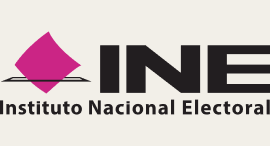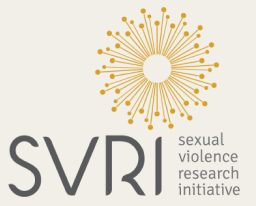In 2020 at the height of the COVID-19 pandemic Meedan’s Digital Health Lab galvanized a team of public health experts to produce critical context for journalists and fact-checkers reporting on emerging science. Now, through the resource that has come to be named Health Desk, our team has written more than 250 explainers for fact-checking and newsroom partners in 25 countries. Year two of this public health crisis is sure to bring its own set of challenges and expose more inequities in the way we’ve designed supply chains, transportation systems, the internet and more. Our team of scientists envision a 2021 in which vaccines and treatments allow for restrictions on public life to ease for some more than others, and for digital connectivity to continue to be both an equalizer and a divider.
We asked our team of experts what to expect as we enter the second year of COVID-19. Here’s an excerpt of what they said:
Jenna Sherman
Jenna Sherman is a researcher and MPH candidate at the Harvard T.H. Chan School of Public Health
The first thing that comes to mind that I find myself continually concerned about is growing societal tension regarding vaccine distribution disparities, and who is able to "return to normal" as a result. We are already beginning to see this dynamic play out with healthcare workers and older, typically white individuals being able to see family members and participate in some activities that the remainder of the population is not. My prediction is that this tension will significantly grow, particularly in the early summer as the number of vaccinations begins peaking, when it becomes glaringly clear that both 1) within countries that have high access to COVID-19 vaccines, such as the U.S., vaccine rates, and in turn, who will be permitted to be more mobile, will be significantly stratified by race, class, and other sociodemographic variables, and that 2) the same phenomenon will take place across countries to an even greater extent and will impact sanctioning, travel, GDPs, and more. I also predict that these disparities in vaccine access will be wrongly disproportionately attributed to vaccine hesitancy as opposed to systemic barriers.
On a positive note, I think that many of us will get to hug loved ones that we haven’t seen in a long time at some point this year post-vaccination, and that there will be a lot of happy tears, joyous reunions and overwhelming feelings. The other side of that coin is that there may also be a lot of exhaustion and societal fatigue, and that it will take some time for us to get used to this new (old) normal again (which will still regularly include masking and social distancing). We need to have patience with ourselves and allow time for collective grief. We also need to allow for processing what a horrific whirlwind this has been – particularly for communities of color and other already marginalized individuals – and what a win it will be for public health for us to hopefully be making it out on the other side. Health disparities very much existed before COVID-19, however, and will continue to exist after, so I hope that throughout and beyond this year we take lessons from the failures of this pandemic to push for radical and inclusive health equity.
Dr. Jessica Huang
Dr. Huang is a COVID-19 Response and Recovery Fellow with the Harvard Kennedy School’s Bloomberg City Leadership Initiative
As a public health professional, I hope we can carry forward the lesson that preventative public health needs to be a higher priority and that we need to have more cross-disciplinary integration (ex. considering public health in the design of public spaces). Will a post-pandemic world better appreciate the need for hygiene and the dangers of exposing others to infection, particularly those with health conditions that put them at greater risk? Can we ensure the pressures to go to work and school in-person while sick remain remnants of the past? Do we finally have more public and political will to invest sufficiently in tracking emerging health risks and developing tools to fight them? One might say the health of our future generations depends on it.
The scale of this pandemic has reminded us of how interconnected we all are in terms of health and well-being, and that we need to make sure people can get vaccinated no matter which country or community they live in for a truly global recovery. Vaccinating some of our own citizens and trying to return to "normalcy" without protecting others is not only unfair, but unrealistic - what of regional/international business, tourism, and other cross-border interactions? We will not be well as a global society until all of us are well. It was promising to see the first COVID-19 Vaccines Global Access (COVAX) shipment delivered to Ghana recently, but this is just the start of much needed international efforts toward reducing inequities in vaccine access.
The unprecedented urgency of this pandemic has also revealed how capable we are when we come together to tackle difficult challenges, such as delivering multiple types of COVID-19 vaccines in record time - can we channel this level of energy into addressing inequities that have been exacerbated by the pandemic, from which a recovery could take even longer? Recovery timelines will look different for different people, often based on the resources that are available (ex. financial and social support); research tells us that social and environmental factors greatly influence people’s health. We need more than a vaccine to address how too many people have had their education interrupted, lost their work and/or their homes, lost someone dear in their household who also played a critical role for income generation and/or caretaking, and so forth. The good news is there are a lot of innovations out there that can make a difference, if we are able to work collaboratively to advance and disseminate them.
Emily LaRose
Emily LaRose is a Digital Health Lab Fellow and Health Desk Process Consultant at Meedan and a Nutritionist Consultant to Operation Smile Doctor of Public Health candidate at the Harvard T.H. Chan School of Public Health where she has completed the Nutrition and Global Health Concentration
While we know a lot more about COVID-19 than we did a year ago, "live" science will continue to guide safety recommendations and, hopefully, policy decisions. On a personal level, I look forward to being vaccinated this spring (or when my age group is eligible for vaccination in my state). While I hope to visit friends and family in the latter half of 2021, the emergence of new COVID-19 variants, vaccine effectiveness, and general safety will determine whether those visits need to be further postponed to 2022.
As a nutrition and global health professional, I am deeply concerned about the impacts that COVID-19 has had on food systems and food security. Nutrition is vital for physical and mental health and wellbeing, immune function, and functional capacity. Before the COVID-19 pandemic, hunger and malnutrition were already impacting hundreds of millions of people worldwide, and, over the past year, worsening food insecurity has become a major concern. This year will be important in nutrition and food security work globally and has been designated the Nutrition for Growth Year of Action. Governments, international aid organizations, and United Nations agencies have made financial commitments to bolster nutrition to promote health in the coming year. With these supports, I hope that investment in new and existing food and nutrition programs will accelerate earlier progress in improving food availability, accessibility, and affordability, especially in poor communities.
Dr. Christin Gilmer
Dr. Gilmer is a Global Health Scientist with a background in infectious diseases, international health systems, and population health and technology
When AIDS activists fought for the sharing of intellectual property for medications, the impact was groundbreaking. In year two of the COVID-19 pandemic, I think activists will continue advocating to make COVID-19 science open source for the public good. Sharing intellectual property on vaccines could ramp up global production and save thousands of lives, ensuring much more equitable outcomes for people in non-high income countries. Considering many successful COVID-19 vaccines were partially funded by national governments, these public investments should support COVAX through direct donations or sharing vaccine formulations and production methods with low- and middle-income countries.
In the U.S. and Europe we should see people returning to their workplaces, school, and other social events but with necessary restrictions such as masks and distancing. Antigen tests may begin rolling out at high levels for rapid and frequent testing needs as we determine whether or not vaccines are protective against new and emerging variants. The likelihood booster shots will be determined in the next few months, but those of us in public health are hoping that current and future vaccine formulas offer enough protection to prevent severe symptoms and hospitalizations. Perhaps the most exciting data we will receive is knowing how protective our COVID-19 vaccines truly are and whether they can prevent transmission, and to what degree.
We collaborated with 53 partner organizations worldwide to design and carry out our 2024 elections projects. We extend special gratitude to our lead partners in Brazil, Mexico and Pakistan, whose work we highlight in this essay.



The 2024 elections projects featured in here would not have been possible without the generous support of these funders.




Footnotes
References
Authors
Words by
Megan runs Meedan’s Health Desk initiative as Senior Program Manager. She has worked for news outlets in Canada and the US, and holds a Peabody Award for her work on Netflix’s Patriot Act series. She has a Master of Science from the Columbia Journalism School.







